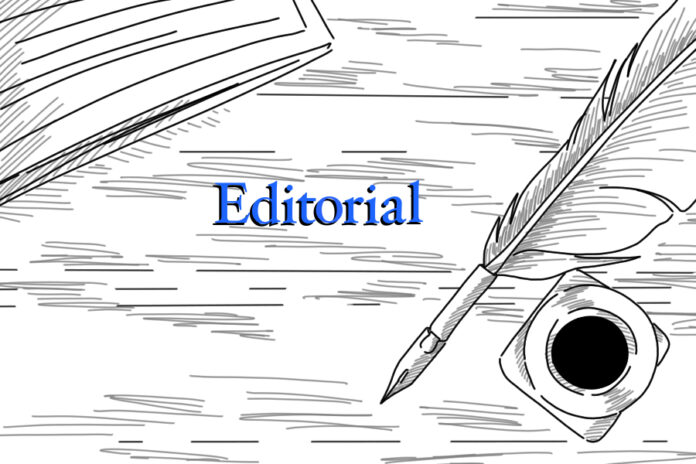The federal recognition of Indigenous Peoples’ Day brings greater awareness, but Indigenous voices can be further uplifted through land acknowledgments and more active discussion in education
On Oct. 8, 2021, President Joe Biden officially recognized Oct. 11, 2021 as Indigenous Peoples’ Day in the U.S. In “A Proclamation on Indigenous Peoples’ Day, 2021,” posted on the White House website, President Biden paid tribute to Native Americans, both for their contributions to the U.S. and for their resilience in the face of years of systematic mistreatment by the federal government.
While Indigenous Peoples’ Day has been observed (often in lieu of Columbus Day, which is also celebrated on the second Monday of October) for years on community, local and state levels, this federal recognition brings meaningful attention to Native Americans, increasing visibility of the community and highlighting the oppression they are still fighting to overcome. The proclamation also prompts Americans to consider what they can do to honor Indigenous people, land and history in this country.
One way to commemorate and uplift Indigenous communities is through land acknowledgments: the practice of recognizing the Indigenous tribes who originally resided on the land being used. This includes the act of stating the names of the tribes on a website or at an event, but preferably includes a well-researched statement about the history of the land and why it’s important to recognize its original inhabitants.
The official UC Davis Instagram account posted a land acknowledgment on Indigenous Peoples’ Day, as did Chancellor Gary May, recognizing that the Patwin people originally inhabited the land on which most of the UC Davis campus was built. As stated on the UC Davis Diversity, Equity and Inclusion website, three Patwin tribes are federally recognized today: Cachil DeHe Band of Wintun Indians of the Colusa Indian Community, Kletsel Dehe Wintun Nation and Yocha Dehe Wintun Nation.
This sort of public acknowledgment is important not only to remind students, faculty and staff of the history and ongoing relationship between Indigenous people and their land but also to encourage other institutions and leaders to do the same. Similarly, the Land Acknowledgement Statement on the UC Davis Diversity, Equity and Inclusion website includes information on acknowledging land, such as the UC Davis Land Acknowledgement Statement and the recommendation to present it at any event held on campus.
These efforts are essential first steps toward making the recognition of Indigenous land, history and culture a widespread practice; but the work mustn’t stop there. Academic institutions especially have a responsibility to educate students — who learn on stolen land — about the history and importance of the communities who were here long before us and who remain to this day.
This isn’t limited to U.S. history or ethnic studies courses, but rather extends to contributions made across the Americas in other fields, from medicine to agriculture. The most comprehensive course would include this information regardless of class falling on the second Monday of October, but at the very least, instructors could recognize the invaluable knowledge and culture of Native Americans on Indigenous Peoples’ Day.
The work of land acknowledgments and other education on Indigenous communities in the U.S. is not simply a matter of history; Indigenous people continue to live in the U.S., and their stories need to be shared, too.
Today, 6.7 million Native Americans live across the U.S., with 22% living on reservations. These communities suffer from the highest poverty rates in the country, poor health outcomes, violence and a lack of education — which, in turn, contribute to dire consequences such as high infant mortality rates and a 2.5 times higher likelihood of experiencing sexual assault than other racial groups. Many of these outcomes can also be attributed to historical trauma, where the traumas faced by prior generations of a community get passed down through the inability to form healthy bonds or repetition of abuse suffered by individuals in their own upbringing.
While highlighting the tragic aftermath of years of dislocation and erasure faced by Native communities is important to understand their reality and how best to support them, it does not define what it means to be Indigenous. These communities are full of wisdom, tradition and culture that have persisted over centuries, despite attempts by European invaders to destroy them. Honoring Indigenous Americans is not just about remembering the horrors they have endured, but the strength and perseverance of their people.
There is no way to make up for the centuries-long genocide, ethnic cleansing and forcible removal of Indigenous people from their land; the formal proclamation of Indigenous Peoples’ Day is a long-overdue start. And while a single day every year is nowhere near sufficient recognition for this community, it serves as a reminder of the ongoing work required to celebrate and support Native Americans, not just on Oct. 11, but every day.
On-campus resources for Native American students are available at the Native American Academic Student Success Center.
If you’re in California, visit https://native-land.ca/ and type in a city or address to find what groups originally inhabited the area.
If you would like to donate to Native American or Indigenous communities, consider Partnership with Native Americans, Native American Rights Fund, Native American Heritage Association or First Nations Development Institute.
Written by: The Editorial Board




